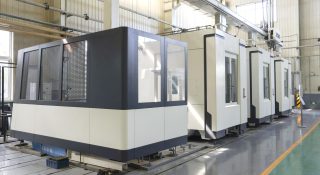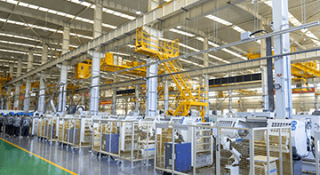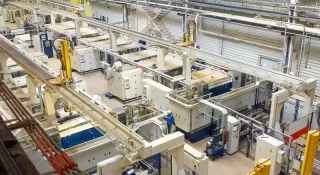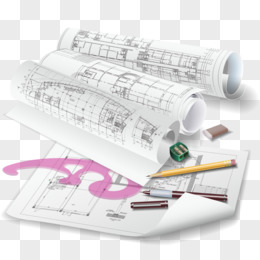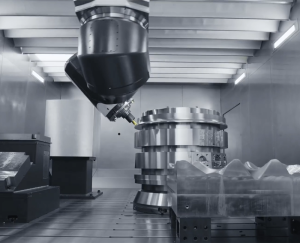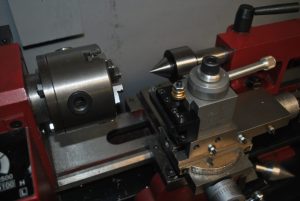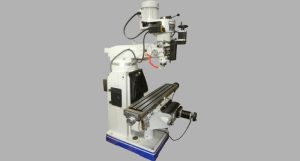In the world of modern manufacturing, precision and efficiency are key. CNC milling is a technology that uses computer numerical control systems to accurately cut and shape materials, and it’s used in a wide range of industries.
CNC milling is a machining process that uses computer code to control where and how the cutting tools move. Instead of using a machine to build up a part from scratch, CNC mills remove material from a blank to create the final piece.
In this guide, we’re going to take a deep dive into CNC milling and talk about how it’s used in modern manufacturing.
What is Milling
Milling is a machining process that involves using rotary cutters to remove material from a workpiece.
What is CNC Milling?
CNC milling, or computer numerical control milling, is a machining process that uses computer programs to control milling machines for cutting materials. It uses rotating cutting tools to remove material from a workpiece to create the desired shape.
Evolution of CNC Milling
CNC milling has been around since the 1950s. In 1952, John T. Parsons of MIT invented the first numerical control machine, which was the beginning of CNC technology.
As computers advanced, so did CNC milling. In the 1970s, the introduction of microprocessors made CNC technology more accurate and efficient.
How CNC Milling Works
CNC milling works by controlling the cutting tools of a milling machine using computer programs. The tools follow a predetermined path on the material.
Key parameters:
Cutting Speed: How fast the tool rotates, usually measured in revolutions per minute (RPM).
Feed Rate: How fast the tool moves, usually measured in inches per minute (IPM) or millimeters per minute (MM/Min).
Cut Depth: How deep the tool cuts into the material on each pass, which depends on the material and tool.
Why CNC Milling is Important
CNC milling is important in modern manufacturing because it’s precise, efficient, and consistent. It allows for fast machining of complex parts, reduces the need for manual labor, and improves production efficiency and product quality. Some other reasons why CNC milling is important include:
Precision and Repeatability: CNC milling ensures high machining precision and consistency, so every part is the same.
Efficiency: CNC milling automates the machining process, so parts are made faster and production efficiency is improved.
Versatility: CNC milling can be used to machine a wide range of materials and complex shapes, so it has many applications.
Reduced Human Error: CNC milling reduces the need for manual labor, which reduces the chance of errors and scrap.
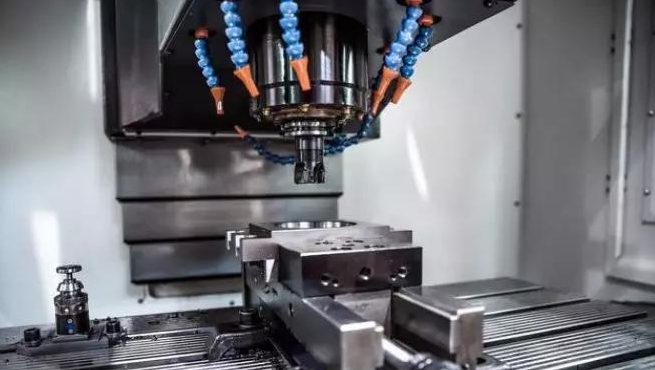
Applications of CNC Milling and Typical Workpieces
CNC milling is used in many industries to make parts. Here are some examples of specific applications and the parts they make:
Aerospace:
- aircraft engines
- structural parts
- turbine blades.
These parts need to be strong and able to handle high temperatures, so CNC milling’s precision and ability to machine strong materials is ideal.
Automotive:
- engines
- transmission housings
- brake discs
CNC milling can machine complex shapes and high-precision fitting parts, which is important for automotive parts to perform well and be reliable.
Medical Devices:
- surgical instruments
- implants
- diagnostic equipment
Medical instruments need to be precise and have smooth surfaces, which CNC milling can achieve.
Electronics:
- housings
- heat sinks
- connectors
Electronic components are often small and complex, and CNC milling can machine these parts to be functional and look good.
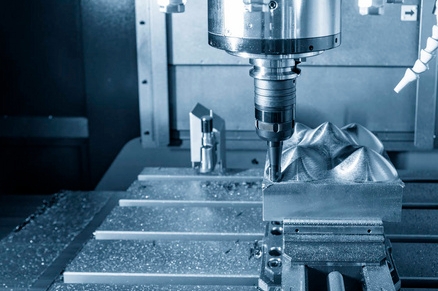
CNC Milling Methods
CNC milling methods include:
Face Milling: Uses an end mill to cut flat surfaces on a workpiece, often used to finish flat surfaces.
Slot Milling: Uses a slot mill to cut slots into a workpiece, often used for keyways, oil grooves, etc.
Profile Milling: Cuts along the contours of a workpiece to create complex shapes, often used for molds and complex parts.
Common CNC Milling Machines
Common CNC milling machines include:
Worktable: Holds the material in place and provides a stable surface for cutting. The table can move in different directions to make different cuts.
Spindle: Holds the cutting tool and does the actual cutting. The spindle can rotate and tilt to make cuts at different angles.
Column: Provides support for all other components. The machine’s base is also included. Oil and coolant tanks are also installed within it.
Knee: The worktable and tool holder are mounted on the knee, supported by the column and capable of moving up and down.
Automatic Tool Changer (ATC): Holds different tools and automatically changes them to do different cuts. The size and speed of the tool changer affect how fast you can make parts.
Coolant System: Sprays fluid or gas on the cutting area to keep the tool and material from getting too hot. You can use cutting fluid or air to cool the tool.
Chip Removal System: Clears away the chips made when you cut material so you can see what you’re doing. When you remove chips quickly, you can make parts faster and safer.
Types of CNC Milling Machines
CNC milling machines are divided into different types based on how they’re built and what they do:
Vertical CNC Mills: The spindle is up and down, and you can use it to make almost any cut.
Horizontal CNC Mills: The spindle is side to side, and you can use it to make long cuts on big parts.
Gantry CNC Mills: The table moves between two columns, and you can use it to make big parts that weigh a lot.
Multi-Task CNC Mills: Do milling, drilling, turning, and other things all in one machine. You can make parts faster because you don’t have to move them around.
Spindle Types and Movement Axis
CNC milling machines have different spindles:
Direct-Drive Spindle: The motor drives the spindle directly. You can use it to cut fast and make precise parts.
Gear-Driven Spindle: Uses gears to turn the spindle. You can use it to cut hard materials and make big cuts.
Belt-Driven Spindle: Uses a belt to turn the spindle. It’s cheap and good for most things. They’re easy to work on and don’t make much noise.
Electric Spindle: The motor and spindle are one piece. It’s small and good for making precise cuts fast.
You can move the machine in different ways:
X-Axis: Moves the machine left and right. It moves the part side to side.
Y-Axis: Moves the machine front and back. It moves the part up and down.
Z-Axis: Moves the machine up and down. It moves the tool up and down.
B-Axis: Turns the machine to cut at different angles. It lets you make cuts at angles.
A and C Axis: Advanced 5-axis machines have A and C axes. They turn and tilt the part so you can make even more complicated parts.
Materials You Can Mill
You can use CNC milling to cut all sorts of materials, including:
Metals: Like aluminum, steel, and titanium. People use these materials because they’re strong and easy to cut. Aluminum is light and moves heat away from the part, so people use it in airplanes and cars. Steel is hard and strong, so people use it for buildings and machines. Titanium is light and strong and doesn’t rust, so people use it in airplanes and medical devices.
Plastics: Like ABS and POM. People use these materials because they’re easy to cut and don’t get ruined by chemicals. People use ABS to make things that need to be tough and strong. People use POM because it’s strong and doesn’t make much friction.
Wood: Like hardwood and softwood. People use wood to make furniture and decorations. Hardwood is strong and lasts a long time, so people use it for nice furniture. Softwood is easy to cut, so people use it for things like molding.
Composites: Like carbon fiber and fiberglass. People use these materials when they need something light and strong. Carbon fiber is light and strong, so people use it in airplanes and race cars. Fiberglass doesn’t rust and is a good insulator, so people use it in boats and electrical things.
People use these materials because they have certain properties. They’re strong, hard, tough, and don’t get ruined by chemicals. These properties make it so you can cut them with a CNC mill and get good results.
How to Use a CNC Mill
When you use a CNC mill, you need to do these things:
- Write a Program: You need to write or put a program into the machine that tells it how to cut and what to cut. You can write the program yourself or use software to make the program.
- Put in Tools and Fixtures: You need to pick the right tools and put them in the machine. You need to pick the right tools for the material and the cut you want to make. You also need to put in fixtures to hold the part.
- Set the Cutting Parameters: You need to set how fast you want to cut, how fast you want to move, and how deep you want to cut. You need to set these things based on the material and the cut you want to make. These things make the cut better and faster.
- Watch the Cut: You need to watch the cut to make sure it’s right. You need to watch how the cut looks and change things if you need to. You also need to change the tools if you need to.
CNC Milling Cost
The cost of CNC milling includes:
Equipment Investment: CNC mills are expensive to buy and maintain. The initial equipment investment can be significant, but the efficiency and automation can reduce production costs in the long run.
Tool Consumption: The cost of using and replacing cutting tools. Better tools can improve machining efficiency and product quality but also increase tool costs.
Operating Costs: This includes electricity and operator wages. CNC mills can reduce labor costs because they are automated, but you still need skilled technicians to operate and maintain them.
Maintenance and Repairs: The cost of regular maintenance and occasional repairs. You need to maintain your equipment to keep it running well, and you need to repair it promptly to avoid bigger problems.
Despite the high initial investment, CNC milling can save you money in the long run because of its high machining capability and low scrap rate.
CNC Milling Machines vs. Conventional Milling Machines
CNC milling machines have several advantages over conventional milling machines:
High Automation: CNC mills reduce the need for manual labor and increase production efficiency. They can automatically perform complex machining tasks, so you don’t have to do it by hand.
High Machining Precision: CNC mills can achieve very high machining precision because they are controlled by a computer. They can do small tolerance machining, which means you can make high-quality products.
High Production Efficiency: CNC mills can quickly make complex parts. They are fast and efficient, which makes them great for mass production.
Conventional milling machines, on the other hand, are good for making simple parts in small quantities. They are cheaper and easier to use. You have to operate them by hand, and they are good for simple machining tasks and low-cost production.
Summary
CNC milling is an important technology in modern manufacturing. It provides high precision and efficiency for many industries. Understanding and mastering CNC milling is key to improving the quality and competitiveness of your production.
FAQs
What’s the difference between CNC milling and CNC turning?
The main difference between CNC milling and CNC turning is how they remove material. CNC milling uses rotating cutting tools to remove material, while CNC turning uses stationary cutting tools to shape rotating workpieces. Milling is good for making complex flat and curved surfaces, while turning is good for making cylindrical parts.
What Are the Available CNC Milling Services?
There are many CNC milling services available. You can get rapid prototyping, batch production, and custom part machining. You should choose a service provider who can give you high-quality machining. They should be able to help you with everything from design to production so you can get what you want.
Is CNC milling easy?
So as we’ve discussed, the CNC machining process can be challenging to master but it is certainly not out of your reach. You should expect it to take over 3 years of hard work to master but it can take just a few hours of easy tutorials to create basic parts.


